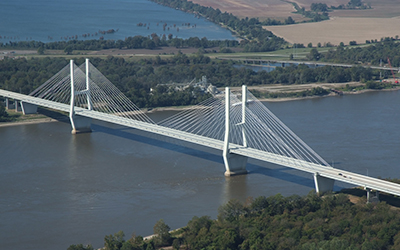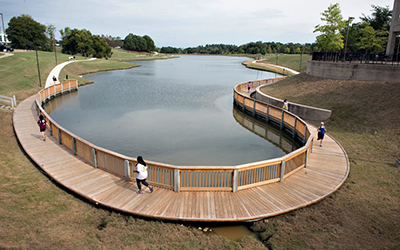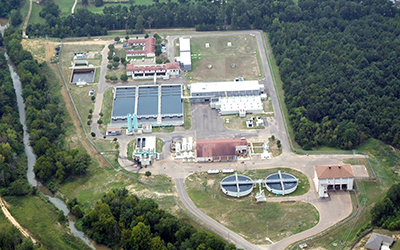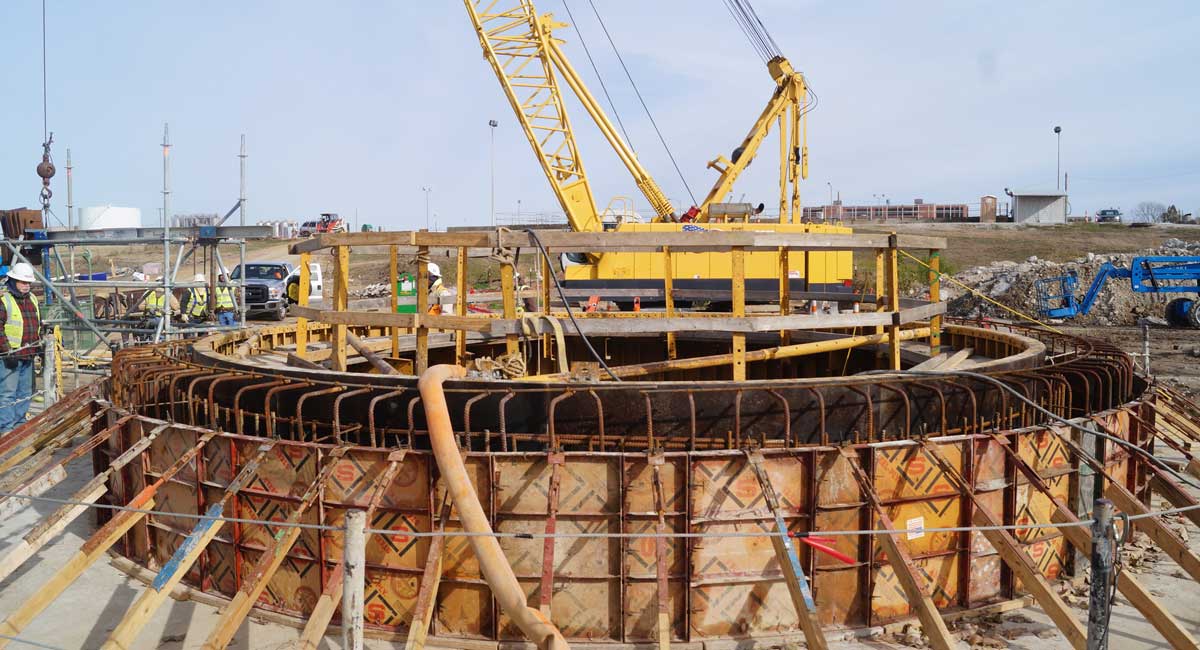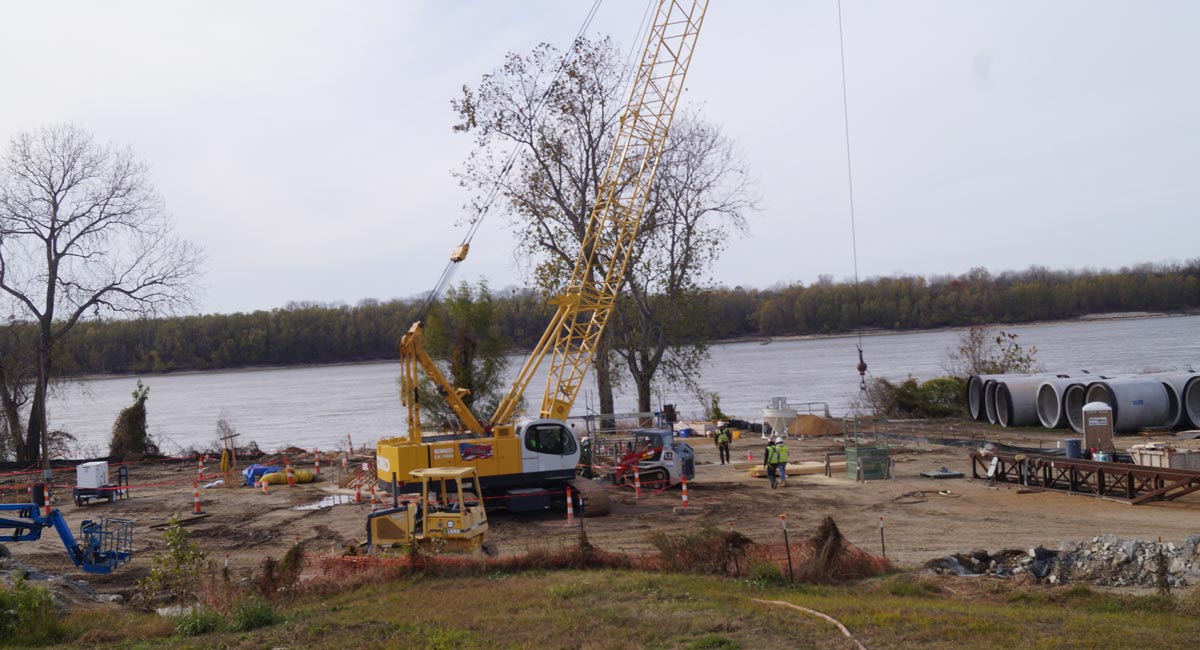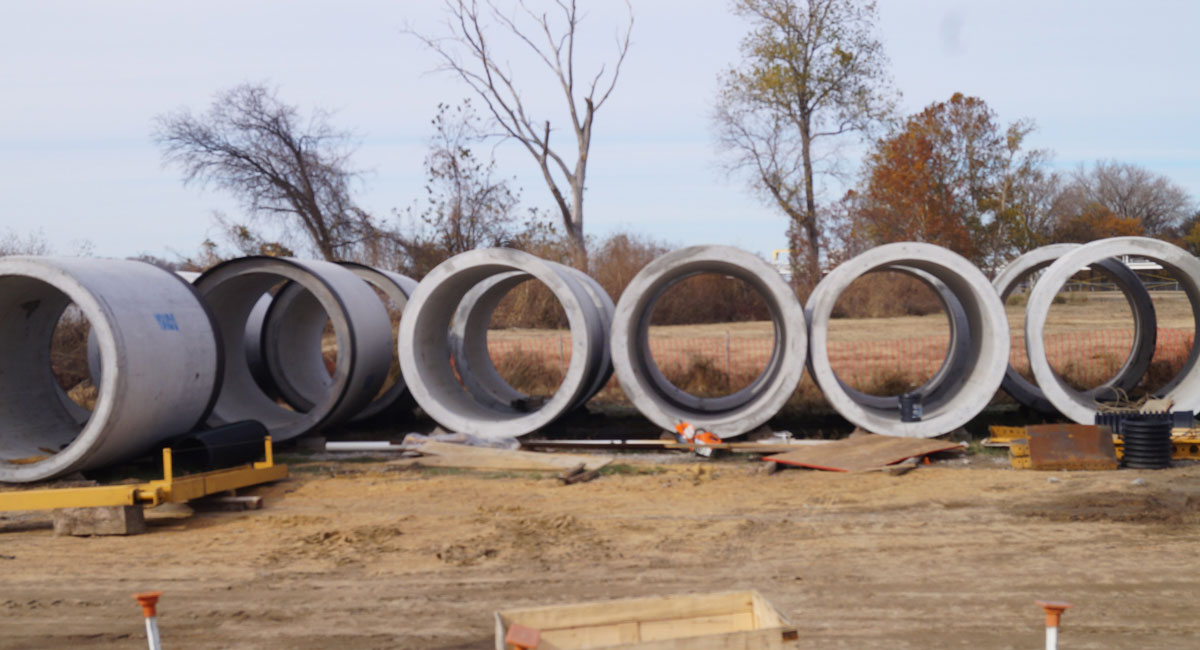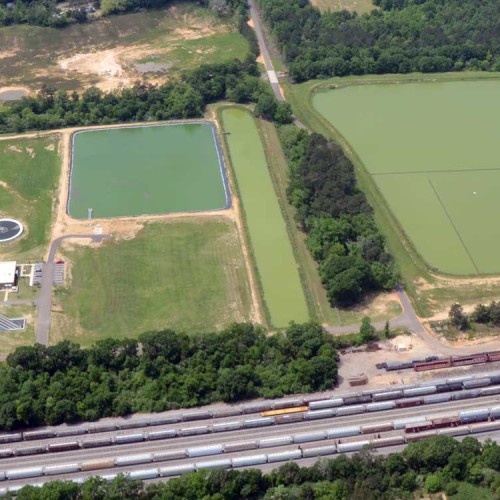MEMPHIS, TN
Innovative chamber reduces foam in wastewater effluent
Neel-Schaffer provided design services for this innovative design-build procured project to add a concrete vortex to one of the two existing outfall lines at the MC Stiles Wastewater Treatment Plant in Memphis (TN). The plant is located on the east bank of the Mississippi River, about a quarter-mile upstream of popular Mud Island.
The plant began operations in 1977 and now treats an average daily flow of approximately 80 million gallons of wastewater. The current NPDES permit requires that “there shall be no distinctly visible floating foam, scum, oil, or other matter contained in the wastewater discharge.” While the City of Memphis had taken steps to reduce foaming, including the use of defoaming agent, foam was still periodically observed in the river immediately downstream from the outfall.
This large vortex structure (roughly 24 feet in diameter and 60 feet deep) helps to reduce the amount of foam resulting from the entrained air in the wastewater affluent.
The conceptual design was developed by CDM Smith in conjunction with Clemson Engineering Hydraulics. This project is part of the Memphis Sewer Assessment and Rehabilitation Consent Decree Program, referred to as the SARP10 Program. The SARP10 program manager on behalf of the City of Memphis is Black and Veatch.
Through the conceptual design process three alternatives were considered: Modifications to the existing outfall drop structure; construction of a moderately sloped spillway with no drop structure; and construction of a vortex effluent drop structure on the existing secondary outfall. It was recommended through CDM, in light of results achieved with a scale model prepared by Clemson Engineering, that a vortex structure on the existing secondary outfall be built.
Neel-Schaffer designed the structure that was outlined in the request for proposal as a subconsultant to design-build contractor Malouf Construction. The $10.5 million project was completed in the fall of 2017.
The project is part of the ongoing consent decree program being managed by Black and Veatch.
In addition to building the vortex, the project included construction of an 84-inch outfall line that allows the plant to discharge into the Mississippi River at a lower elevation, further reducing the occurrence of foam. The outfall line was installed using microtunneling, saving more than $1 million compared to typical shored excavation techniques.
Also as part of Neel-Schaffer’s role all local, state, and federal permits had to be obtained prior to construction. One permit involved building in a designated FEMA floodplain.
Neel-Schaffer looked at the cut-fill to determine if there would be floodplain impacts and issued a letter to the City for floodplain approval. A river model was not performed, but gave some general details about the floodplain and the 2-year/100-year flood elevations. Other permits were obtained from the City of Memphis, the U.S. Army Corps of Engineers, and the Tennessee Department of Environment and Conservation.
Interested in seeing a short clip of the vortex in action? Click here!

